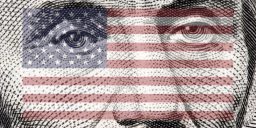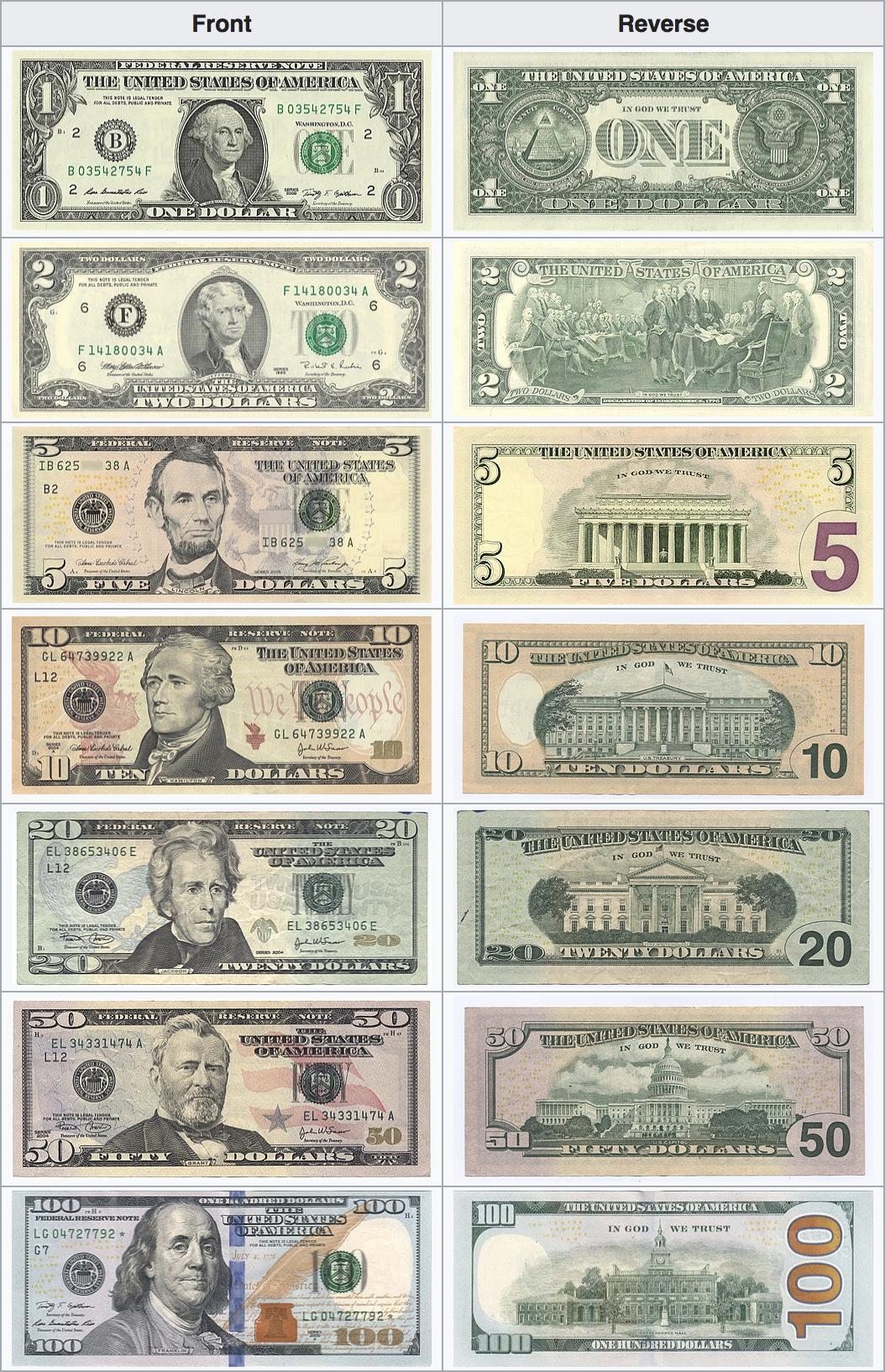Understanding the US Dollar: A Guide to America's Currency for Travelers and Investors
The United States dollar is the official currency of the United States of America but also is the world’s dominant reserve currency, and it accounts for roughly 62% of global foreign exchange reserves, double that of the Euro and Yen. In fact, the US Dollar has been the world’s reserve currency for over 100 years.

Welcome to our guide to the US Dollar, where we unravel the complexities and significance of one of the world's most powerful and recognized currencies.
The US Dollar (USD) is not just the official currency of the United States but also a global financial linchpin, playing a pivotal role in international trade, investment, and economics. This guide is crafted for those looking to Save on USD exchange rates whether they be travelers, traders or investors looking to understand the intricacies of USD in global markets.
The US dollar is the world currency for a number of reasons. It was adopted by several countries in the aftermath of World War II, when the Bretton Woods system pegged national currencies to the dollar and required countries to hold dollars as reserves. The dollar also became popular with oil exporting nations because it was the currency used in oil transactions.
How-to Save on USD Exchange Rates
Exchange rates can vary significantly between different banks and currency exchange providers, so it's important to compare US dollar (USD) exchange rates from different sources and providers before making a foreign exchange transaction.
The below Exchange Rate Rate Calculator and Comparison Table makes it easy to compare the Total Cost you are being charged on US dollar exchange rates and the possible savings of using each provider.
Is the USD Strong or Weak?
First Check the US Dollar Index
A good way to measure the comparitive value of the US dollar to other currencies is to look at the dollar index. The U.S. Dollar Index (USDX) is an measure of the value of the United States dollar relative to a basket of foreign currencies. The Index goes up when the U.S. dollar is stronger compared to other currencies.
The U.S. Dollar Index serves as a barometer of the overall health and international competitiveness of the U.S. economy. The US Dollar Index started in 1973 at the value of 100.000. It has since traded as high as 164.72 in February 1985, and as low as 70.69 in March 2008.
Read our US Dollar Index - What is it? to see what it means and which currencies are included.
Then Compare USD against a broader range of currencies
Analyzing the U.S. Dollar against a wider range of currencies, not just those in the U.S. Dollar Index, offers a more complete view of its global strength. This approach captures broader trade relationships, emerging market trends, and diverse economic factors, providing a clearer picture of the dollar's performance in the world economy.
Which countries besides America use the US dollar as official currency?
Other nations besides the United States use the U.S. dollar as their official currency. For instance, Ecuador, El Salvador, and East Timor all adopted the currency independently. The former members of the U.S.-administered Trust Territory of the Pacific Islands, which included Palau, the Federated States of Micronesia, and the Marshall Islands, chose not to issue their own currency after becoming independent, having all used the U.S. dollar since 1944.
Two British dependencies also use the U.S. dollar: the British Virgin Islands and Turks and Caicos Islands. The islands Bonaire, Sint Eustatius and Saba, now collectively known as the Caribbean Netherlands, adopted the dollar on January 1, 2011, as a result of the dissolution of the Netherlands Antilles. The U.S. dollar is the official currency for governmental transactions in Zimbabwe.
Which countries fix their currency to the US Dollar?
Several countries peg their currency to the U.S. dollar, meaning that they maintain a fixed exchange rate with the dollar and intervene in their foreign exchange markets to ensure that their currency remains pegged at the predetermined rate. Some examples of countries that peg their currency to the U.S. dollar include:
It's worth noting that while these countries maintain a fixed exchange rate with the U.S. dollar, they are not necessarily dependent on the U.S. economy. Rather, they may use the peg as a way to stabilize their own domestic economies or to make their exports more competitive.
Sending International Transfers with OFX
![]()
OFX at a glance:
OFX has a 20-year history and is one of the largest foreign exchange specialists in the world. It offers a complete foreign exchange solution, including discounted money transfers, currency hedging tools, recurring transfers, a multi-currency account for online sellers and much more.
OFX grew from the idea that there had to be a better, fairer way to move money around the world. That was over 20 years ago, and since then over 1 million customers have trusted OFX with transfers in 50+ currencies to over 170 countries.
OFX don’t just offer great rates, they believe real help from real people counts. That’s why their clients get the best of both worlds – a seamless digital platform, combined with 24/7 phone access to currency experts.
When it comes to moving money, peace of mind is important. OFX is monitored by over 50 regulators globally and work within a network of carefully selected banking partners. So whether you are sending money to friends and family abroad, or doing business across borders, OFX can get your money where it needs to go. Fast, simple, secure.
Learn more about OFX
Using OFX for money transfers offers the benefit of lower fees and competitive exchange rates compared to traditional banks, making international transactions more cost-effective.
Additionally, OFX provides 24/7 customer support, a range of transfer options including spot and forward contracts, and a user-friendly online platform, enhancing convenience and flexibility for global financial transactions.
What Savings Can I Expect with OFX?
OFX offers exchange rates that beat the banks, and are close or equal to the rates offered by the industry’s lowest-cost services.
When you register via our OFX 0.5% exclusive offer for BER users the cost of sending, for example, 5,000 US dollars to Australia equates to 0.5 percent of the transferred amount, or roughly US$25. You’d pay the same 0.5 percent for the same amount to be sent to Europe and around 1 percent if sending to India. This compares with 4–7 percent with the banks.
For other currency routes we looked at (routes involving AUD, INR, GBP, EUR, SGD and USD), the average cost of an international payment with OFX was 0.6 percent of the transferred amount. This is exceptional if compared with banks but can be a little more expensive than what is charged by the industry’s lowest-cost services, although such services do not offer the same benefits and customer service as OFX.
Why is the U.S. Dollar (USD) Important for Travelers?
The U.S. Dollar is considered important for travelers for several reasons:
1. Global Acceptance: The USD is widely accepted around the world, even in countries where it's not the official currency. This makes it convenient for travelers as they can often use it directly or exchange it easily.
2. Stability and Strength: The USD is often viewed as a stable and strong currency. This stability can be appealing to travelers who want to minimize the risk of exchange rate fluctuations affecting their travel budget.
3. Ease of Exchange: In many countries, exchanging USD for local currency is easier and offers better rates compared to other foreign currencies. It's also readily available in most exchange bureaus around the world.
4. Benchmark Currency: The USD is often used as a benchmark in global financial markets. Prices for many travel-related expenses like flights, hotel bookings, and tours are often quoted in USD, making it a convenient reference point for budgeting.
5. Emergency Currency: In case of any financial emergency while traveling, having USD can be a lifesaver as it's more likely to be accepted or exchanged quickly compared to other currencies.
6. Wide Acceptance for Bookings: Many international booking websites and services quote prices and accept payments in USD, which can simplify the process of planning and paying for travel.
7. Familiarity and Confidence: For travelers from countries that use less widely recognized currencies, carrying USD can provide a sense of security and familiarity in foreign financial transactions.
However, it's always advisable to have a mix of local currency and USD when traveling, as well as using credit or debit cards that are accepted internationally, to cover all bases.
What do US dollar banknotes look like?
The United States dollar is referred to as the dollar, U.S. dollar, or American dollar is also nicknamed the "green-back" as as you can see is predominantly green. So care should be taken when handing over money or checking your change in low-light situations. Post-2004 series banknotes have started to incorporate other colours to better distinguish different denominations. Currently printed denominations are $1, $2, $5, $10, $20, $50, and $100. The following table shows the current design of the notes both front and reverse.

US dollar banknotes - front and reverse design (source Wikipedia)
Disclaimer: Please note any provider recommendations, currency forecasts or any opinions of our authors should not be taken as a reference to buy or sell any financial product.